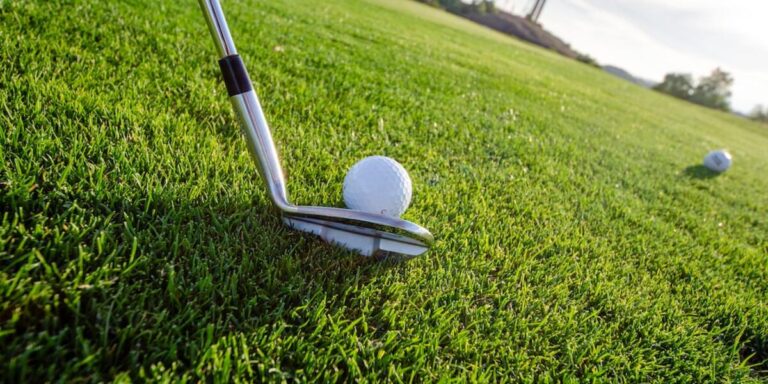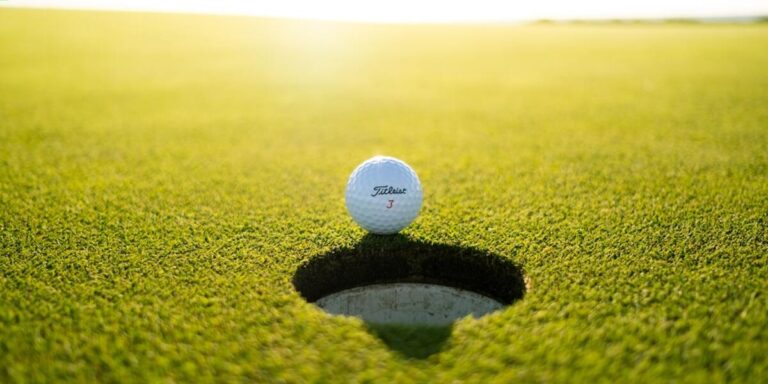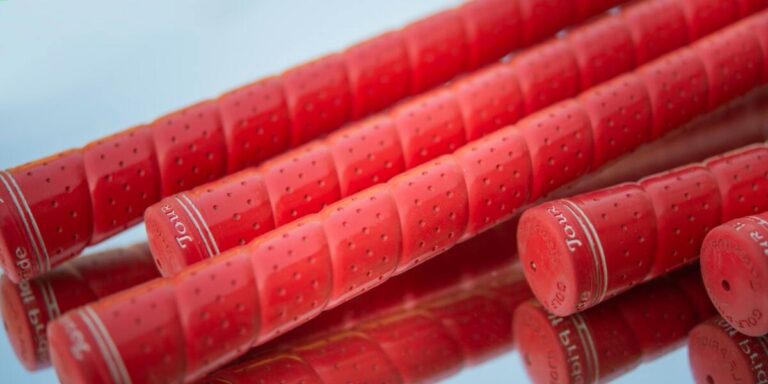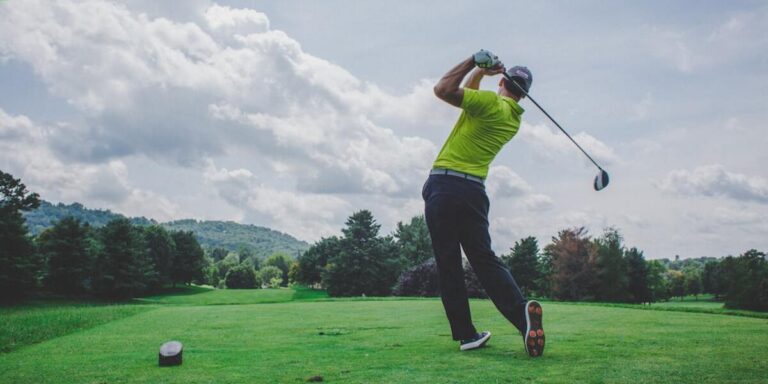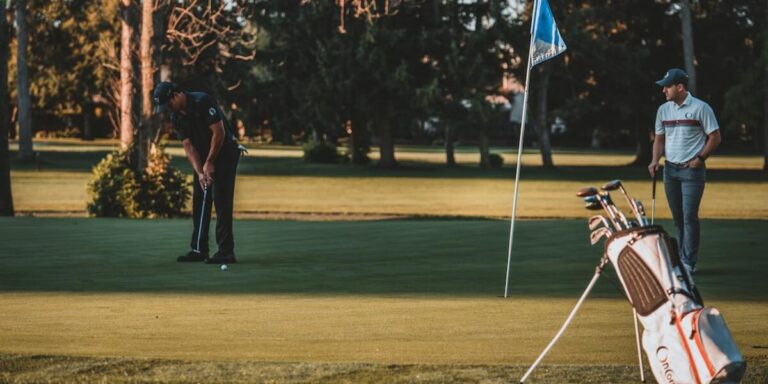How can you tell if irons are worn out?
If you’re thinking about buying some used golf clubs, you might be wondering how to tell if they’re worn out. Here are a few things to look for:
1. Check the club head. If it’s dented or bent, the club is probably past its prime.
2. Take a close look at the shaft. If it’s starting to show signs of wear (e.g., cracks, splits), it’s time to replace it.
3. Examine the grip closely. If it’s worn down or damaged in any way, it needs to be replaced before using the club again.”
How to tell if your irons are worn out
If you’re an avid golfer, you know that having the right clubs can make all the difference in your game. But what happens when your clubs start to show signs of wear and tear? How can you tell if it’s time to replace them?
1. Check the clubface. If the grooves on your clubface are starting to disappear, it’s definitely time for new clubs. The loss of grooves will affect the spin and trajectory of your shots, making it more difficult to control the ball.
2. Take a close look at the shafts. If they’re bent or showing any other signs of damage, they need to be replaced. Bent shafts will cause your shots to veer off course, so it’s important to have straight ones if you want accurate results. 3Look for excessive wear on grip tapes . Worn-out grips mean less traction and control over your clubs, so replacing them is essential if you want perform at your best.. 4Check for cracks or chips in Clubheads Chips or cracks in clubheads not only weaken them but also change the way weight is distributed throughoutthe head which will impact shot accuracy negatively..All these factors considered together can give provide evidence as too whether used golf Irons have been abused and possibly worn out by their previous owner..
When do golf clubs need to be replaced?
Golf clubs are a significant investment, and it’s important to take care of them so they last as long as possible. Here are some tips on when to replace your golf clubs:
If you’re starting to see wear and tear on your clubs, it may be time for an upgrade. Look for signs like chipping or flaking paint, dents or bends in the metal, and worn-out grips. If your clubs are more than a few years old, they may not be performing as well as newer models; replacing them can give you a serious boost in performance.
You should also consider replacing your clubs if you’ve changed significantly as a golfer. For instance, if you’ve just started playing golf, you’ll likely benefit from upgrading to better quality clubs after awhile. Or if you’ve been playing for years but have recently begun taking lessons, switching to different club types (e.g., swapping out irons for hybrids) can help improve your game.
Of course, how often you need to replace your golf clubs depends largely on how often you play and how well you take care of them; someone who plays several times per week will probably need new clubs sooner than someone who only plays once in awhile. Ultimately, though ,it’s important to listen to your gut feeling about when it might be time for an upgrade – even if that means splurging on those shiny new irons before strictly necessary!
Signs that indicate it’s time for new irons
It’s no secret that golf clubs can be expensive. But if you take good care of your clubs, they should last several years. That being said, there are some signs that indicate it may be time for an upgrade – even if your clubs are still in good condition. Here are four signs that it might be time to start shopping for new irons:
If you’ve been playing the same set of irons for a while and your game hasn’t improved, it may be time to switch things up. Perhaps you’re now hitting the ball further than you used to and need something with more forgiveness. Or maybe you’ve developed a hook or slice and need different clubhead geometry to correct the problem. Either way, new irons could help improve your game.
Even if your current set of irons is performing well, they may not be using the latest technology available on newer models. If you’re looking for a performance edge, upgrading to a newer model could make a difference – especially if the price isn’t much higher than what you paid for your old set (or less). Newer materials and construction methods have led to lighter yet stronger clubheads which can provide more speed and distance without sacrificing accuracy or feel..3 They don’t fit anymore Golfers’ swings change over time due mostly to age and experience . As we get older our swings tends t o slow down just as course conditions tend t o toughen up so we don’t hit as many pure shots as we once did . In both cases , it
How often should you replace your golf clubs?
How often you should replace your golf clubs depends on a few factors.
The first factor is how often you play. If you are an avid golfer, playing several times a week, then you will need to replace your clubs more frequently than someone who only plays once in awhile. The second factor is the type of club head material. Clubs with steel heads will last longer than those with graphite heads. And finally, the type of shafts also affect lifespan – steel shafts last longer than graphite shafts.
So, how often should you replace your golf clubs? As a general rule of thumb, if you play once a week or less, every two years for irons and woods; every three years for putters; and every four years for wedges. But remember, these are just guidelines – ultimately it comes down to personal preference and what works best for YOUR game!
Is there a difference between iron wear and tear?
There is a big difference between iron wear and tear. Iron wear occurs when the clubs are used excessively and begin to show signs of wear, such as nicks or scratches. Tear, on the other hand, happens when the clubs are subject to extreme force, such as being hit with a golf ball or hitting a tree root. While both types of damage can affect the performance of your clubs, tear is much more serious and can render them unusable.
What causes irons to break down over time?
As any golfer knows, clubs don’t last forever. Over time, the metal in irons will break down and eventually need to be replaced. But what causes this deterioration?
There are a few factors that can contribute to the breaking down of irons over time. First, repeated impact with a golf ball can slowly weaken the metal structure of an iron head. Additionally, exposure to moisture and humidity can cause rusting or corrosion, which also weakens clubs. Finally, simply age and wear-and-tear can take their toll on irons, making them less reliable over time.
Of course, taking care of your clubs can help extend their lifespan somewhat. Storing them properly (in a dry place away from direct sunlight) and cleaning them regularly will go a long way towards keeping them in good condition for longer. However, at some point all golfers will need to replace their worn out clubs with new ones – and that’s where used golf clubs come in!
Why do some golfers prefer used clubs?
There are many reasons why some golfers prefer used clubs. For one, they may feel that new clubs are overpriced and not worth the investment. Additionally, used clubs can often be just as good as new ones if they’ve been well-maintained – and sometimes even better because they’re more comfortable for the golfer. Another reason is that golfers may want to try out a certain brand or type of club before committing to buying it brand new. And finally, some people simply enjoy hunting for bargains and finding good deals on gently used equipment. Whatever the reason, there’s nothing wrong with preferring used golf clubs – as long as you know what to look for when making your purchase!
Frequently Asked Question
-
How can you tell if irons are worn out?
-
How often should you change your golf glove?
-
Do golf drivers go dead?
-
Why do older golfers lose distance?
-
Are older golf irons still good?
-
How long do golf irons last?
-
Are golf clubs cheaper in the winter?
-
Do golf clubs lose distance over time?
-
What time of year do golf clubs go on sale?
-
Should I sharpen the grooves on my irons?
-
Are 20 year old irons too old?
-
Do golf clubs matter for beginners?
-
Are 20 year old golf irons still good?
-
How often should you replace your golf clubs?
It’s time to replace your equipment if the crown of the driver has become shabby or your irons/wedges are soiled. McKee states that if wedges or irons become loose, it will cause the ball to lose its spin when entering the green.
You should change your golf gloves every couple of rounds, but this isn’t always possible. It is time to replace your glove if the glove’s gripping qualities start to wear and becomes shiny.
Cracks or defects in the face of a golf club can cause a driver to lose his pop and go blind. It can happen due to faulty manufacturing, weakness or a defect in the driver’s head. This affects performance and distance.
Distance in golf is achieved by being able to turn the ball away and then swing the club swiftly and smoothly back. As they age, their ability to make this turn becomes less fluid and their strength decreases in the core, arms and legs.
As the grooves on your golf irons and their clubfaces deteriorate, they will eventually become dead. Irons older than 5 years are most likely obsolete and will not perform as well. Golf technology changes rapidly.
How long can golf irons actually last? An excellent set of golf clubs irons will last between 8-12 years or 300 rounds.
If you don’t live in warm climates year round, the chances of playing golf during winter are slim. Major manufacturers and suppliers of accessories and golf clubs offer additional incentives to keep their sales strong.
Irons that are truly used can be difficult to find. I would have to go back in time to my father’s days when the clubs were still usable. If your irons are truly used, they can be discarded by you for 7-10 yards.
The sale of golf clubs takes place two times per year. This is after Christmas and New Year holidays, as well as during Fall when top brands like Nike, Callaway and Titleist announce new products that lead to lower prices for individual clubs or complete sets.
Your golf club’s grooves are crucial for ball control and backspin. You may not have thought of sharpening your grooves before, but worn-down grooves won’t give you the backspin or control you want.
Golf clubs don’t deteriorate. There are no signs to support this. Clubs that are well maintained will last for a long time. Clubs older than 10 years should be inspected for more options, but clubs younger than 5 years are not in danger.
You don’t have to use any Clubs, but you must strike the ball consistently at the beginning stage. This will help you develop a consistent swing and good golfing fundamentals, such as hitting the ball in the Club’s face.
A set of irons should last between five and ten years, unless you are a heavy user or shut the range down every night. It all depends on what technology you are looking for in your irons. Nothing has really changed over the decades if you use traditional forged irons.
For low handicap golfers and those who play regularly, it is a good idea to have the irons replaced after three hundred rounds of playing or about four to five years. You will be able to keep your clubs in good condition and avoid them from getting damaged at the places you hit the ball.
Conclusion
If your iron is wearing out, it will show signs of use. Look for worn spots on the clubface or sole, and ask yourself if the club looks like it has been well-maintained. If not, it’s probably time to start shopping for new irons. However, don’t discount used golf clubs just because they’re secondhand; many times you can find great deals on lightly-used clubs that are still in excellent condition. So when in doubt, check out some used golf clubs for sale before making a decision on whether or not to replace your current set.



